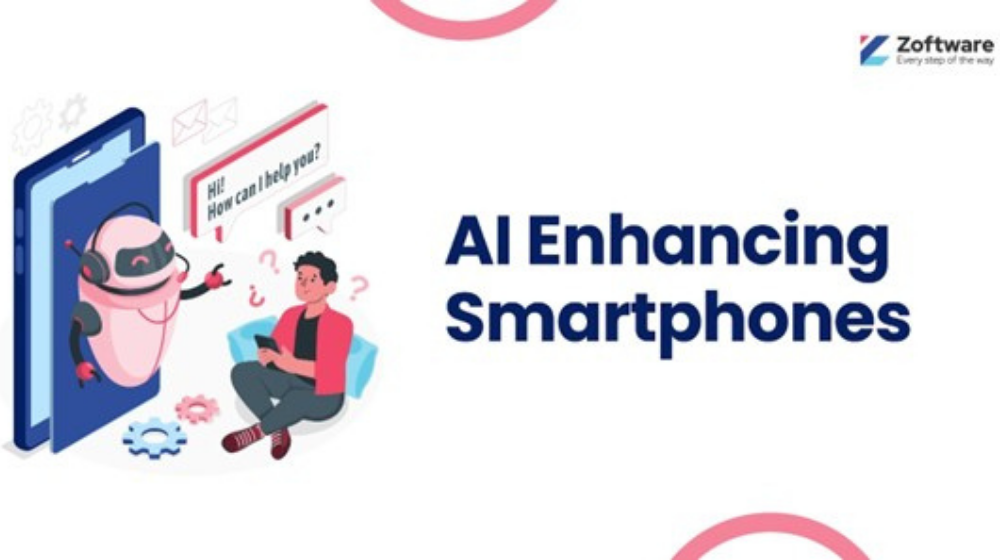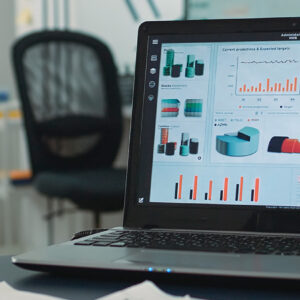Artificial Intelligence (AI) has seamlessly integrated into the fabric of daily life, with smartphones at the forefront of this technological integration. These ubiquitous devices employ sophisticated AI algorithms to enhance user experience and functionality.
AI in smartphones isn’t a novelty but a core feature that improves with each software update and hardware upgrade. It’s responsible for many conveniences, from personalizing content to securing the device with facial recognition.
AI’s role in smartphones extends beyond facilitating tasks—it also learns and adapts to a user’s behavior and preferences, making each device uniquely tailored to its owner’s needs.
The Role of AI in Modern Smartphones
Artificial Intelligence (AI) has become a cornerstone in the evolution of smartphone technology, enabling a suite of advanced features that optimize camera functions, provide voice-activated assistance, and anticipate user needs.
Enhanced Photography
Smartphones now utilize AI to improve image and video quality significantly. Real-time processing harnesses machine learning algorithms to enhance photos. For instance, features like scene detection apply optimal settings based on identified subjects, while portrait modes create professional-looking depth-of-field effects. AI also powers low-light capabilities, reducing noise and adjusting exposure to capture clearer images in challenging conditions.Voice Assistants and Language Processing
Voice assistants, powered by AI, perform many tasks, such as sending messages, setting reminders, and offering information. They utilize natural language processing to understand and respond to user queries with increasing context awareness. Speech-to-text and text-to-speech capabilities are also enhanced, offering users a seamless and intuitive way to interact with their devices.
- Voice Commands: Activate non-touch device interactions.
- Information Retrieval: Provides users with answers and assistance.
- Language Translation: Delivers real-time translation services.
User Behavior Prediction
AI algorithms predict user behavior to improve the smartphone experience. These systems learn individual patterns and preferences to provide relevant content and app suggestions. Furthermore, they manage power consumption by analyzing usage trends, optimizing battery life, and ensuring the device’s performance is tailored to the user’s habits.
- Content Suggestions: Tailors app and content recommendations.
- Battery Optimization: Manages power based on usage patterns.
- Performance Adjustment: Alters device performance to suit user activity.
Machine Learning Frameworks in Mobile Devices
Machine learning frameworks empower smartphones to process and analyze data directly on the device or utilize cloud-based resources efficiently.
On-Device vs. Cloud-Based AI
On-device AI refers to the machine learning capabilities integrated into the smartphone’s hardware and software, allowing it to perform tasks without an internet connection. Data processing and model execution occur directly on the mobile device, enhancing privacy and reducing latency.
- Advantages include:
- Privacy: Sensitive data remains on the device.
- Speed: Immediate response without network delays.
- Accessibility: Functions without internet access.
Cloud-based AI, on the other hand, relies on external servers to perform computations. Data is sent to the cloud, where models are run, and results are transmitted back to the device.
- Advantages include:
- Computational Power: Access to more powerful processing.
- Scalability: Easier to manage large-scale ML tasks.
- Maintenance: Updates and fixes are applied centrally.
Core Mobile ML Libraries
Mobile devices utilize specialized ML libraries optimized for their processors, whether it be CPUs, GPUs, or NPUs (Neural Processing Units).
- TensorFlow Lite: A lightweight version of TensorFlow, designed specifically for mobile and embedded devices, offering pre-trained models and the ability for developers to create custom models.
- Features:
- Model Optimization: Efficient model performance on mobile devices.
- Hardware Acceleration: Supports GPU and NPU processing.
- Features:
- Core ML: Apple’s machine learning framework is used across all iOS devices, making it easier to integrate various ML models into apps.
- Features:
- User Privacy: Data processing within the device.
- Real-time Processing: Low latency for live predictions.
- Features:
AI-Driven User Interface and Experience
Today, Smartphones leverage AI to reshape how users interact with their devices, ensuring interfaces are convenient and content tailored to individual preferences.
Adaptive UIs and Accessibility Features
Smartphones use AI to adapt user interfaces (UIs) to individual needs. Accessibility features like screen readers and voice recognition are enhanced by AI to understand and predict user requirements, making technology more inclusive. For example:
- Brilliant Contrast: AI adjusts screen contrast based on ambient light and user preferences.
- Voice Control Precision: Natural language processing allows precise device control through voice commands.
These intelligent adaptations result in fluid interfaces responsive to unique user interactions.
Personalized Content Delivery
AI systems analyze user behavior to deliver personalized content, making smartphone experiences more relevant and engaging. This analysis involves:
- Learning from user interactions with apps and services.
- Predicting content that would interest the user based on past behavior.
Recommendation Algorithms: AI curates app suggestions, news feeds, and notifications specifically for the user.
Content curation by AI not only keeps users engaged but also aids in discovering new interests and information without actively searching for it.
Security and Privacy Concerns
Artificial Intelligence (AI) enhances smartphone capabilities and introduces security and privacy concerns. Users must be aware of how their data is handled and the potential vulnerabilities that AI systems can present.
Biometric Authentication
Smartphones often use AI to improve biometric authentication methods such as fingerprint and facial recognition. These AI-driven systems must constantly evolve to resist spoofing attacks and ensure that only authorized users can access their devices.
- Fingerprint Recognition: AI algorithms are trained to detect unique fingerprint patterns, making false acceptance rates extremely low.
- Facial Recognition: Utilizing AI, smartphones can analyze facial features in-depth, enhancing the system’s ability to distinguish between the actual user and a photograph or a 3D model.
Data Protection through AI
AI on smartphones provides personalization and functionality but also aids in protecting user data from unauthorized access and cyber threats.
- Encryption: AI algorithms can manage complex encryption processes, ensuring personal data is stored and transmitted securely.
- Anomaly Detection: By learning normal usage patterns, AI can detect and respond to unusual behavior that may signify a security breach, protecting sensitive information.
Note: Although AI can significantly bolster security, the technology must be safeguarded against potential exploitation. Users should be cognizant of the privacy policies and security measures taken by smartphone manufacturers and app developers to protect the integrity of AI systems.
The Impact of AI on Mobile Hardware
Integrating AI into mobile hardware has significantly improved processing efficiencies and power management.
AI Optimization in Chipsets
Modern smartphones house AI-optimized chipsets specifically designed to handle machine learning tasks. These chipsets, such as Qualcomm’s Snapdragon 8 series and Apple’s A-series Bionic chips, contain dedicated neural processing units (NPUs) or AI accelerators. NPUs perform tasks related to AI and machine learning, such as:
- Image and speech recognition: Facilitates real-time processing without relying on cloud servers.
- Natural language processing: Allows for quicker and more accurate speech-to-text conversion.
Battery Efficiency and Management
AI also plays a key role in enhancing battery efficiency and management. AI algorithms learn user patterns and optimize battery consumption by:
- Adaptive Brightness and Performance: Adjusting screen brightness and device performance based on usage.
- Smart Charging: Prolong battery lifespan by modulating charging speed according to predicted usage patterns.
Emerging Trends in Pocket AI
The landscape of artificial intelligence in mobile technology is rapidly progressing, with Augmented Reality (AR) applications and AI integration in wearable devices standing at the forefront of innovation.
Augmented Reality Applications
Augmented Reality (AR) applications are becoming increasingly sophisticated, leveraging the power of AI to provide interactive and immersive experiences. Smartphones can now overlay digital information onto the real world, enhancing the user’s perception of reality. Real-time object recognition and contextual information display are key features enabled by advancements in AI. For instance:
- Object Recognition: Using the smartphone camera, AI can identify objects and overlay relevant information or virtual objects.
- Navigation and Maps: AR applications enhance navigation by projecting directions onto the real-world view of streets.
AI in Wearables Integration
AI in wearables is evolving beyond simple fitness tracking. Integration between wearables and smartphones is deepening, with AI driving personalized, real-time interactions and insights. Key aspects include:
- Health Monitoring: Wearables now use AI to provide more detailed health analytics, such as predicting patterns in heart rate variability.
- Smart Notifications: AI algorithms analyze user interactions to prioritize notifications, ensuring critical information is presented promptly on wearables.
Challenges in Mobile-Embedded AI
Embedded artificial intelligence (AI) in smartphones faces significant obstacles that can affect performance and user experience. These challenges primarily relate to hardware capabilities and connectivity issues.
Computational Limitations
Smartphones possess limited computational power compared to dedicated AI servers. Processor Capabilities: Devices often rely on CPUs and GPUs that are less powerful than those found in specialized AI computing systems. Memory Constraints: On-device RAM and storage may not suffice for complex AI algorithms, which can lead to slower processing speeds.
Network Dependency and Latency
Smartphone AI frequently requires cloud support due to on-device limitations.
- Connectivity Reliance: For tasks like natural language processing and image recognition, smartphones often must send data to remote servers for processing.
- Latency Issues: This dependency introduces latency, as data transfer times can vary based on network speed and reliability.
Wrapping Up!
Cameras will become increasingly sophisticated with AI-powered features such as scene and voice recognition, real-time translation, and advanced photo editing. They will not just capture images but understand and enhance them contextually.
Security is another area where AI will play a pivotal role. Future smartphones will utilize AI to implement more robust biometric authentication processes and real-time threat detection, thus elevating the safety of personal data.
Zoftwarehub is a leading AI-powered software discovery platform in the Middle East that enables businesses to find the right software solutions that are tailored to their requirements and fit their price bracket.
Sign up on our website and find the best software solutions for your business!





